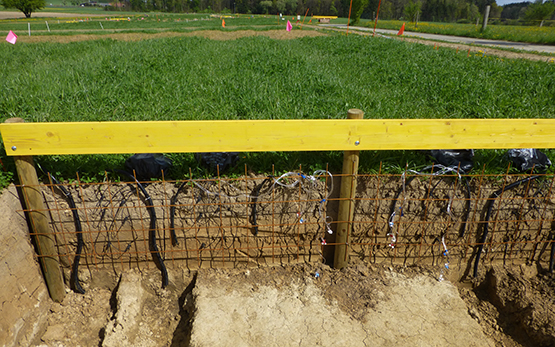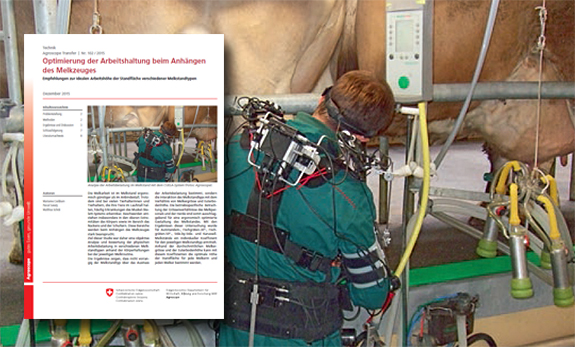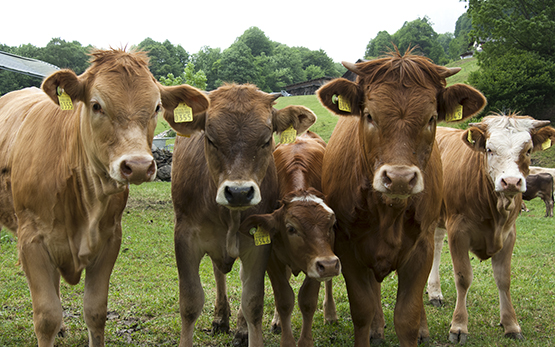Roesch A., Douziech M., Mann S., Lansche J., Gaillard G.
Consequences of the use or absence of life cycle assessment in novel environmental assessment methods and food ecolabels.
Cleaner Production Letters, 8, 2025, Artikel 100087.
Ehlers M.-H., El Benni N., Douziech M.
Implementing responsible research and innovation and sustainability assessment in research projects: A framework and application.
Research Policy, 54, (2), 2025, Artikel 105164.
Mehner E., Douziech M.
Alternativen für tierische Produkte im Check.
ofagofon, 229, 2024, 10-11.
Douziech M., Mann S., Galley S., Lansche J.
A classification scheme for urban agriculture combining technical properties with characteristics related to the economic and social sustainability.
Agronomy for Sustainable Development, 44, 2024, Artikel 54.
Munoz Liesa J., Furrer C., Nemecek T., Douziech M., Martin M.
Environmental impacts of vertical farming across Europe: Outlook and future perspectives.
In: 14. Ökobilanz-Plattform Landwirtschaft. 22 October, Hrsg. Agroscope, Zürich. 2024.
Douziech M., Ehlers M.-H., Baumeyer Brahier A., Bagnoud M., Gaillard G.
Nachhaltigkeitsbewertung der Algenproduktion als alternatives Futtermittel.
In: . 22. Oktober, Hrsg. Agroscope, Zürich. 2024.
Ehlers M.-H., El Benni N., Douziech M.
Responsible Research and Innovation in der Nachhaltigkeitsbewertung der Entwicklung neuer landwirtschaftlicher Technologien.
In: 14. Ökobilanz-Plattform Landwirtschaft. 22. Oktober, Hrsg. Agroscope, Zürich. 2024.
Mehner E., Ehlers M.-H., Herrmann M., Höchli B., Holenweger G., Mann S., Messner C., Nemecek T., Reguant Closa A., Schäfer O., Stämpfli A., Walther B., Douziech M.
Die ernährungsphysiologischen und ökologischen Folgen des Ersatzes von Fleisch und Milchprodukten in der Ernährung: Status quo und Innovationspotenziale.
In: 14. Ökobilanz-Plattform Landwirtschaft. 22. Oktober, Hrsg. Agroscope, Zürich. 2024.
Mehner E., Herrmann M.K., Nemecek T., Reguant Closa A., Stämpfli A., Walther B., Douziech M.
The nutritional and environmental consequences of replacing meat and dairy products with market-ready alternatives in recommended and self-selected Swiss diets.
In: 14th International Conference LCAFood. 11 September, Hrsg. IRTA, Barcelona (ES). 2024, 1-12.
Mejia B. M., Stüssi M., Mehner E., Gaillard G., Douziech M.
A practitioner-driven methodological framework to assess the sustainability of regional food products.
In: 14th International Conference LCAFood. 9 September, Hrsg. IRTA, Barcelona (ES). 2024, 1-14.
Mehner E., Ehlers M.-H., Herrmann M., Höchli B., Holenweger G., Mann S., Messner C., Nemecek T., Reguant Closa A., Schäfer O., Stämpfli A., Walther B., Douziech M.
Fleisch- und Milchersatzprodukte - besser für Gesundheit und Umwelt?: Auswirkungen auf Ernährung und Nachhaltigkeit, die Sicht der Konsumentinnen und Konsumenten sowie ethische und rechtliche Überlegungen.
TA-SWISS, vdf Hochschulverlag AG. 1. Aufl., 2024, 300 S.
Lansche J., Mann S., Galley S., Douziech M.
A consistent classification of urban agriculture as prerequisite for a sound sustainability assessment.
In: Vth European Horticulture Congress. 12-16 May, Hrsg. ISHS, Bucharest (RO). 2024, 14.
Douziech M., Anyango Oginah S., Golsteijn L., Zwicky Hauschild M., Jolliet O., Owsianiak M., Posthuma L., Fantke P.
Characterizing freshwater ecotoxicity of more than 9000 chemicals by combining different levels of available measured test data with in silico predictions.
Environmental Toxicology and Chemistry, 43, (8), 2024, 1914-1927.
Douziech M., Bystricky M., Furrer C., Gaillard G., Lansche J., Roesch A., Nemecek T.
Recommended impact assessment method within Swiss Agricultural Life Cycle Assessment (SALCA): v2.01.
Agroscope Science, 183, 2024.
Roesch A., Douziech M., Mann S., Lansche J., Gaillard G.
Methoden zur Bewertung der Nachhaltigkeit von Nahrungsmitteln: Mögliche Fallstricke und Beispiele.
In: 13. Ökobilanz Plattform Land- und Ernährungswirtschaft. 20. Juni, Zürich. 2023, 1-11.
Roesch A., Douziech M., Mann S., Lansche J., Gaillard G.
Methoden zur Bewertung der Nachhaltigkeit von Nahrungsmitteln: Mögliche Fallstricke und Beispiele.
In: 13. Ökobilanz Plattform Land- und Ernährungswirtschaft. 20. Juni, Zürich. 2023, 1-11.
Owsianiak M., Hauschild M. Z. , Posthuma L., Saouter E., Vijver M. G., Backhaus T., Douziech M., Schlekat T., Fantke P.
Ecotoxicity characterization of chemicals: Global recommendations and implementation in USEtox.
Chemosphere, 310, 2023, 1-12.
Bagnoud M., Baumeyer Brahier A., Douziech M., Riedl W., Wahl F.
Algafeed: on-farm production of protein-rich microalgae for animal feed.
In: Innofood. 20. juin, Hrsg. Cluster Food & Nutrition, Bulle. 2022, 1.
Lansche J., Iten L., Audoye P., Farrant L., Douziech M.
Developing policy recommendations for Short Food Supply Chains in Europe.
In: SETAC EUROPE 32nd ANUAL MEETING. 15. Mai, COPENHAGEN, DENMARK - SETAC. 2022.








